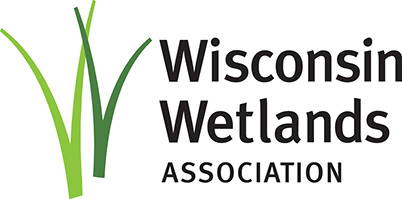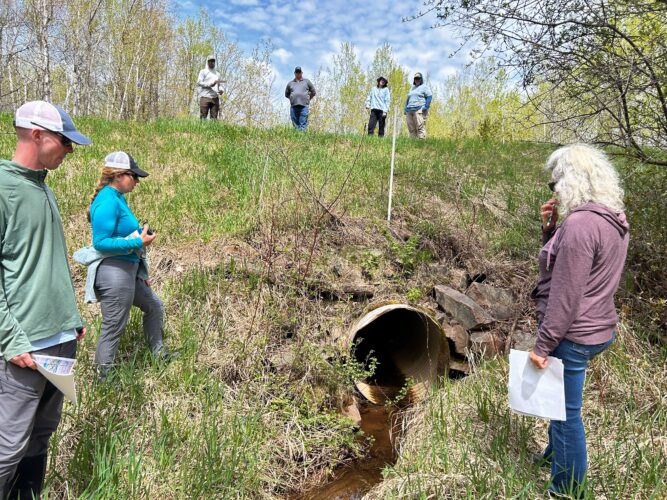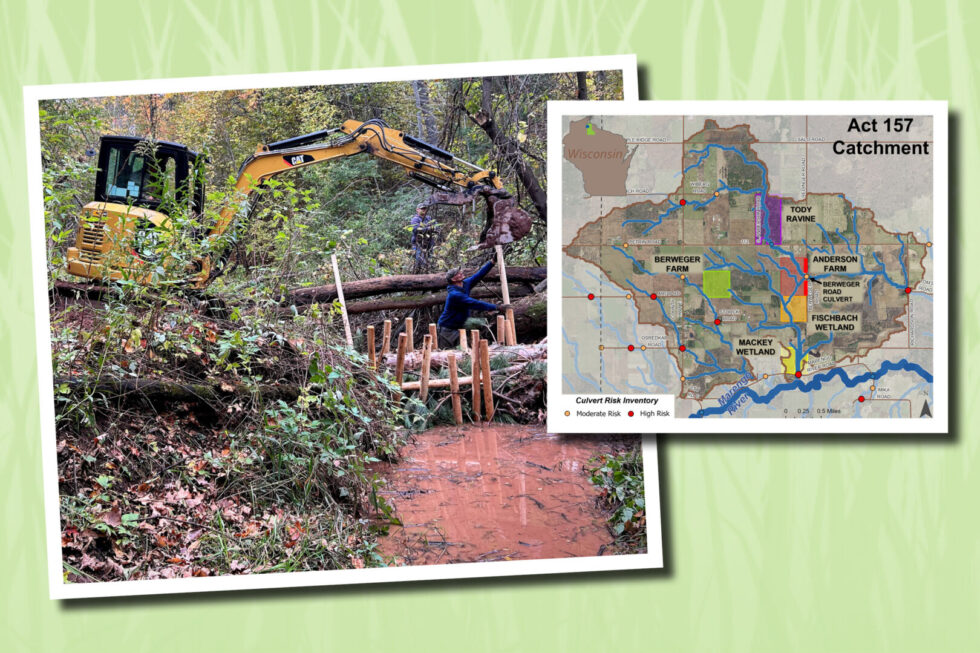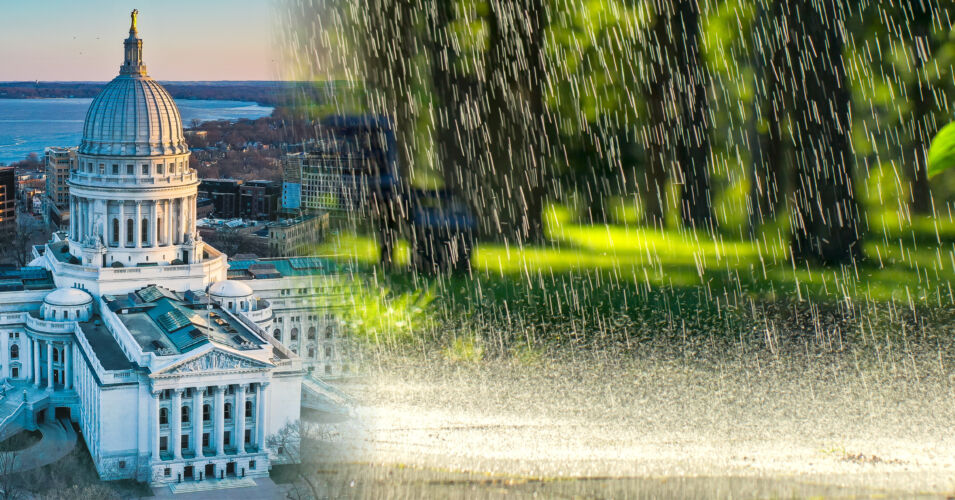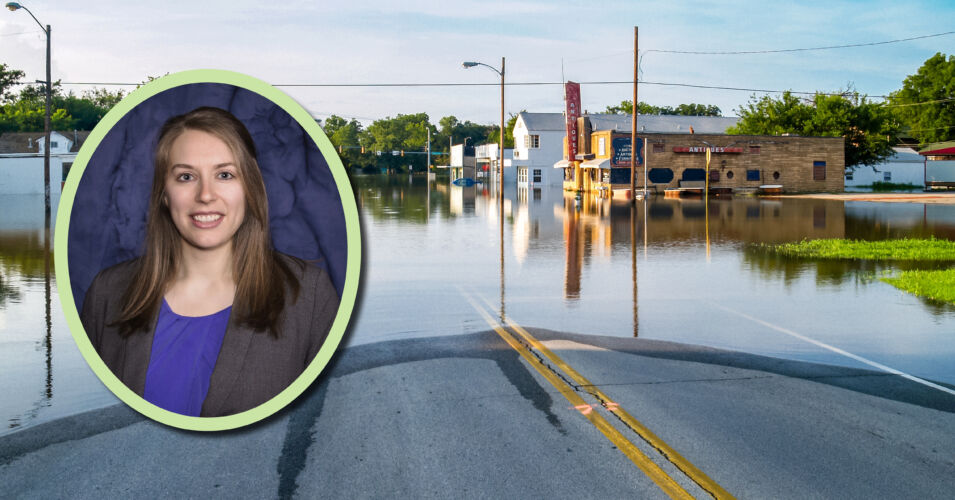On the last day of the 2025 Wetland Science Conference, Wisconsin Wetlands Association and Trout Unlimited teamed up to facilitate a workshop titled Resilient Streams, Resilient Infrastructure. This workshop was the third and final part of a conference programming series jointly organized by Trout Unlimited and Wisconsin Wetlands Association. Read about the other two sessions here and here.
The responsibilities of managing roads, culverts, and bridges, and preparing for floods and other hazards are shared by towns, villages, cities, and counties. This workshop brought together a wide range of folks who hold these responsibilities, from local government representatives of Driftless Region municipalities to regional and state agencies, as well as conservation and watershed partner groups.
Sara Strassman of Trout Unlimited’s Driftless Area Restoration Effort began the workshop by introducing the principles of flood resilient infrastructure and nature-based solutions. She encouraged the audience that, in order to have flood resilient infrastructure, it’s important to also think beyond the culvert and the right-of-way and assess and restore the conditions of the wetlands and floodplains upstream.
Sara then demonstrated how to explore and export data from tools like the Great Lakes Stream Crossing Inventory and the National Aquatic Barrier Inventory & Prioritization Tool. She also shared how Trout Unlimited and other groups are leveraging the data to inform and prioritize infrastructure upgrades, fish and wildlife habitat improvements, and hydrologic restoration projects.
Chris Collier of Trout Unlimited’s Great Lakes Program shared culvert and stream habitat improvement projects his teams are doing across the region. He discussed how a well-designed road-stream crossing, when the stream and wetland are also considered, can provide many benefits that help communities save time and money in the long term. These include increased wetland and floodplain capacity; adequate structure size, water quality, and flows for fish movement through the culvert; and a road that is resilient and able to withstand heavy flows from flooding.
The next part of the workshop was presented through two case studies in different regions of Wisconsin. Kyle Magyera highlighted the work Wisconsin Wetlands Association has co-led in the Lake Superior region to assess flood and erosion vulnerabilities of culverts, streams, and wetlands. Kyle shared key final assessment results, lessons learned, and how local towns are utilizing the data to form partnerships and prioritize and scope projects that include both structural and nature-based solutions to slow the flow of floodwaters in the Marengo River Watershed.
The second case study featured the Little La Crosse River PROTECT-funded project, guest-presented by the Monroe County Highway Commissioner, Dave Ohnstad. This new project will include an analysis supporting the replacement of road-stream crossings with structures that are able to withstand the next big storm. The funding will also cover hydrologic and hydraulic evaluation for doing upstream work to make headwater streams and wetlands more resilient, or in Dave’s words, “make running water walk.” Dave also excitedly shared that the US Department of Transportation has selected this project as a national case study for resiliency project planning.
Following the presentations, workshop attendees engaged in an interactive discussion about how flooding impacts local decision-making and how they might apply concepts from the case studies to their road operations and maintenance work. One attendee mentioned that there’s been an increase in the need to replace culverts – from once every 10 to once every 3 years, due to increased washouts.
Attendees and presenters wrapped up the session by talking about the barriers to utilizing nature-based solutions to help build more flood-resilient infrastructure, and how creative partnerships and combinations of funding sources may help communities overcome barriers and be more successful in their efforts.
While this workshop was the final co-hosted sessions of the conference, these important conversations will continue as Wisconsin Wetlands Association looks to support community-based partnerships in the Driftless Region.
Related content
New report details innovative demonstration project work in Ashland County
Inaugural rollout of Wisconsin’s Pre-Disaster Flood Resilience Grant generates great interest
Wisconsin Towns Association Guest Column: Pre-Disaster Flood Resilience Bill
